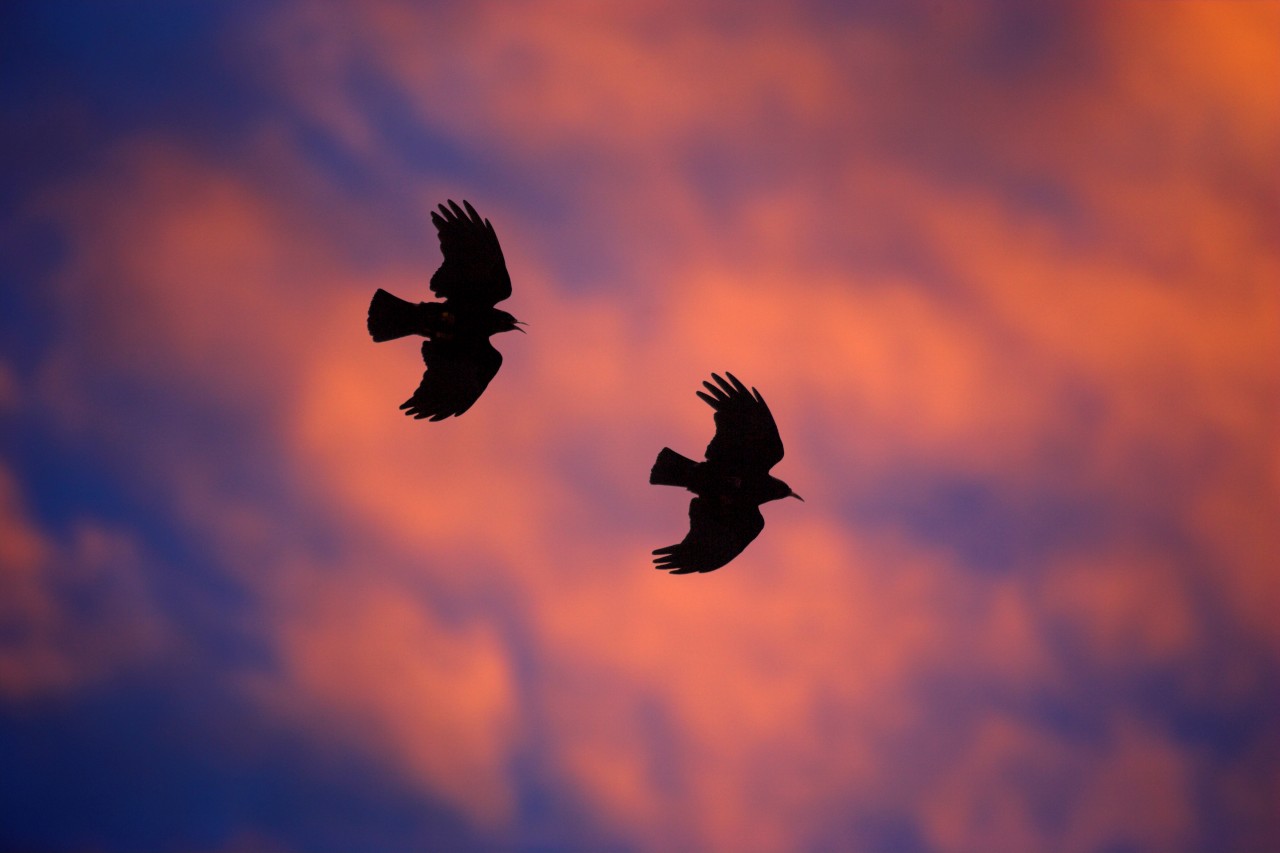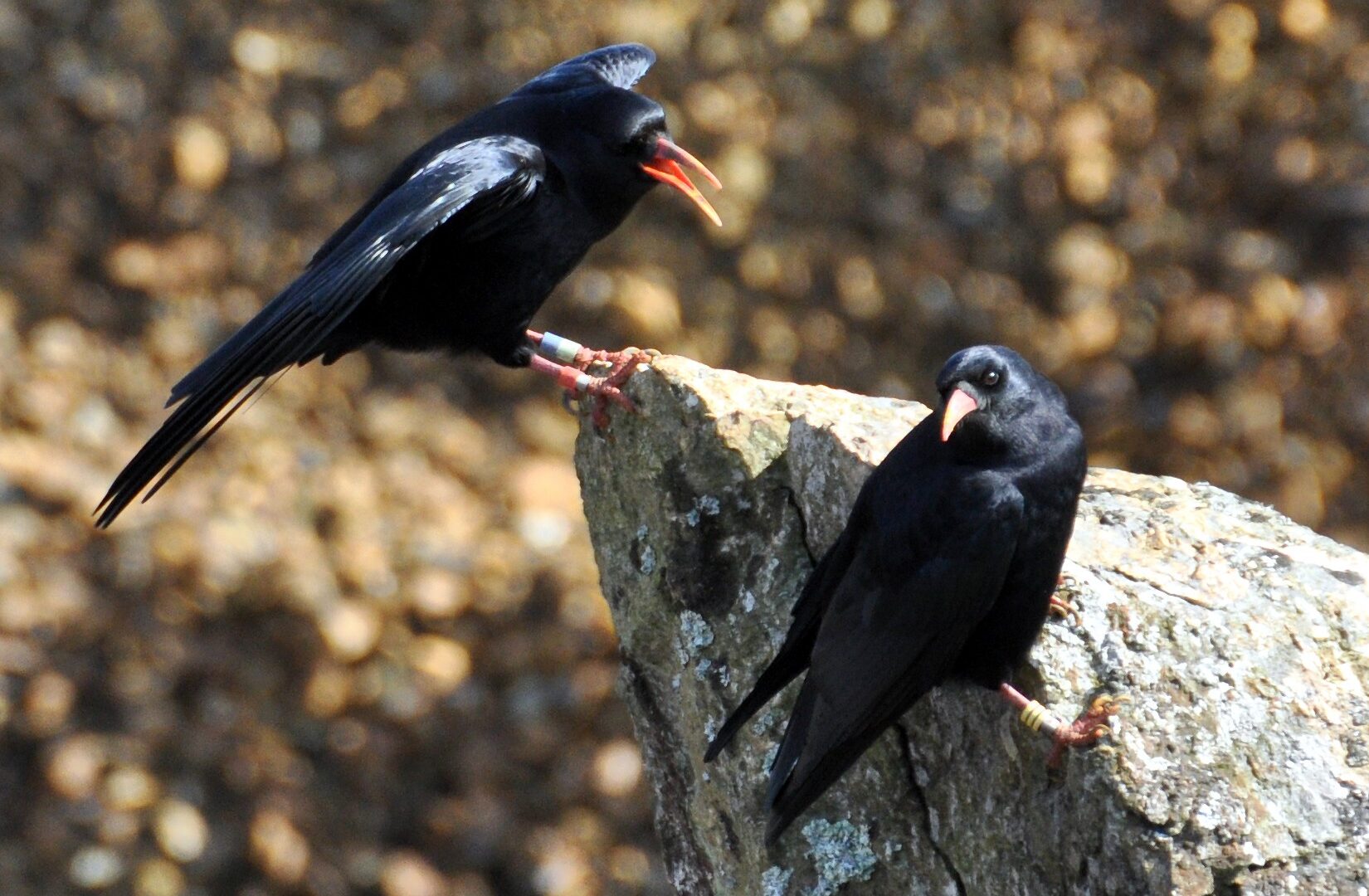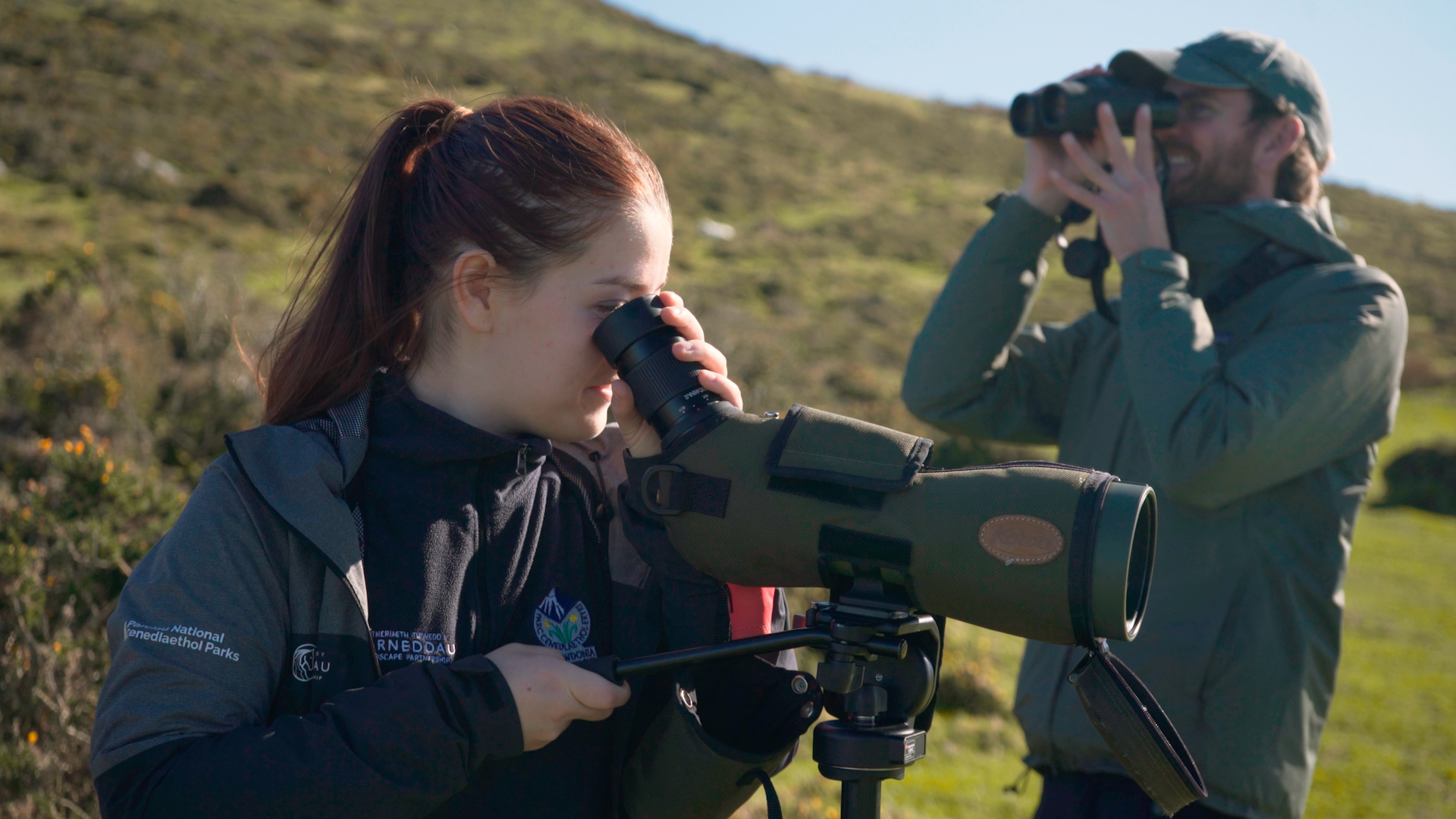
LookWild: The efforts to protect an iconic bird of Eryri
-
Date posted: 29/09/2025
-
Time to read: 4 mins
The chough (pronounced ‘Chuff’), or ‘Brân Goesgoch’ (meaning ‘red-legged crow’ in Welsh), is the rarest member of the crow – or corvid – family in the UK and can be found nesting on high, coastal cliffs, in quarries and abandoned buildings. Adult choughs have a large wingspan of around 80cm and can live for up to 24 years.
The chough is an very social bird that keeps in constant contact with its companions. You can often hear its unique call “cheee-ow, cheee-ow” as you walk on the uplands of the Carneddau, in the northern part of Eryri (Snowdonia) National Park.
A part of the landscape
Choughs have often been considered part of the cultural landscape of Eryri. Another name for the bird in Welsh is ‘Brân Arthur’. Legend has it that the soul of King Arthur departed this world in the form of a chough, with its red legs and bill signifying Arthur’s violent and bloody end.

In the late-eighteenth and early-nineteenth centuries, quarry workers in Bethesda and Penmaenmawr often kept choughs as pets. During this time, choughs were incredibly popular cage birds and exhibition curators would routinely visit quarrying areas across the country.
The chough is the rarest breeding crow in the UK and it has been identified as a priority species by the Welsh Government. Almost 30% of the UK’s chough population can be found in North-West Wales, with the Carneddau upland pastures offering a vital feeding habitat.
A chough’s diet mainly consists of soil, ground and dung-dwelling invertebrates, but the birds can also be found eating seeds and sometimes berries. In winter, choughs will often head to the coastline to feed on sand dunes and beaches when food can be harder to find on pasture.
Threats and protection efforts
One of the main threats facing these birds is the loss of suitable habitat at traditional foraging sites.
With the help of volunteers, our scrub vegetation clearance project is creating more open feeding grounds for the chough at key locations across the Carneddau.

We are also tracking the chough population to better understand their ecology and habitat usage through the year. This information is important as it will inform future conservation plans for the species. But more people are needed to help identify these birds on the Carneddau uplands as better records of this species will help to inform future conservation plans.
Local people can help to identify and monitor the Chough and the dung-dwelling invertebrates. Volunteers and members of the public can help us collect further data on Chough numbers and their feeding behaviours by joining us on seasonal counts and emailing their Chough sighting data to this email address.
Contractors are also monitoring chough numbers by using GPS tags to map their activity across the Carneddau. Through our webcam installations at nesting sites, the live feed is being used to raise awareness of this rare and fascinating bird – a true icon of Eryri.

